After our success with the white truffles, Lisa and I decided to make our cooking together a regular thing. A supper club of sorts that I'm formally calling Table Conviviale (French for "The Convivial Table") on Four Tines. Our ventures in all things hedonistic together are for the bravest and brights of gastronomes, whereby we embrace our inner bon vivant (i.e., one who enjoys the good things in life, especially good food and drink) during each rendezvous by choosing a "secret ingredient" (like they do on Iron Chef). These "secret ingredients" are for the most part arbitrary (our first successful attempt with white truffles, as mentioned already), but can be slightly attributable to seasonal availabilities and also to how relatively challenging (we're aiming for gourmet culinary challenges, here) an ingredient and/or preparation-style may be.
So, during Lisa's recent perusal on Gilt Taste, she stumbled upon a selection of Hudson Valley foie gras. This particular offering on Gilt Taste features (as listed under below photograph) D'Artagnan and its best foie gras products. D'Artagnan has been crafting and purveying specialty foods (like Hudson Valley foie gras) for the country's finest restaurants, including many a restaurant here in New York City. Given how much foie gras holds a special place in our hearts (and our stomachs!), Lisa decided to go for it, naming our next "secret ingredient" for our Table Convivale: foie gras!

The loot of foie gras arrived via post promptly and well-packaged with blocks of ice packs to keep the foodstuffs cold. It included an assortment of two large slices of Grade A foie, 6 ounces of truffle-flecked foie mousse, one 8-ounce terrine of foie gras, plain mousse of foie gras, and bite-sized "French Kisses" made from prunes laced with Armagnac and piped with airy whipped foie gras. One thing was for sure -- lots of fatty goodness to be prepared and served as our dinner ahead. Arteries and cholesterol, watch out for our one ultimate night of foie gras!
Findings: So Lisa and I embarked on the task of successfully making foie gras in a city kitchen as if we were chefs in a fancy-schmancy restaurant would make for their patrons. What we learned, you ask? Well, when you're attempting to cook, for the first time, an ingredient that isn't normally commonplace in a domestic kitchen, my advice is to just dive right in, head first. The recipe will only be challenging if you make it out to be. That being said, foie gras was a lot easier to cook than we initially had speculated. Whether it's searing both sides or stuffing it inside of a quail's hollowed interior, it just takes patience and meticulousness with the recipe to yield a pretty great result.
Now, after eaten all of that incredibly rich (though, it can barely be described in words) foie gras, I think Lisa and I've had our fix of it for the next several months. I can feel my arteries thanking me graciously and admonishing me at the same time. It was worth it, though, especially with the wine pairings we informally picked (yay for Bellus Wines)!
For our next Table Convivale dinner, we're already considering bone marrow and uni (sea urchin) as our next ingredients for the start of 2012! Very much looking forward to it!
Price point: $149.95 for a D'Artagnan foie gras assortment ( two large slices of Grade A foie, 6 ounces of truffle-flecked foie mousse, one 8-ounce terrine of foie gras, plain mousse of foie gras, and bite-sized "French Kisses" made from prunes laced with Armagnac and piped with airy whipped foie gras ) from the Hudson Valley via Gilt Taste; $7-20 for each bottle of assorted liquors and wines (brandy, port, and champagne) from Bottle King in New Jersey; D'Artagnan semi-boneless quail at $19.99 per pound via FreshDirect (sold in packs of four, ~3 ounces each); $22.99 for a bottle of Girasole Cabernet Sauvignon by Bellus Wines from Crush Wine Co.
Here are the French Kisses -- prunes laced with Armagnac (i.e., brandy) and stuffed with whipped foie gras in their center. Lisa and I took a "shot" of one each. The French Kisses were very rich, where the piped foie gras went very nicely with the well-absorbed Armagnac and the juicy fruitness of the prunes. I, myself, could only have one because it was so overpowering in flavor (particularly the Armagnac). I think Lisa had two or three, as she instantly fell in love.
Initially, when I was asking around about where to find fresh brioche to eat with the terrine of foie gras, my friend Linda informed that I could find a loaf of brioche at Whole Foods(at least the Columbus Circle location), with the pleasant tidbit that Whole Foods gets its brioche from Balthazar Bakery, the famed French patisserie in SoHo, making it that much more exciting to get brioche! I went to the Whole Foods at Columbus Circle a week before our dinner to make sure I could find the brioche loaf in the bakery section. Lo' and behold -- the brioche loaves were nicely packaged in the French typefaced pastry bags from Balthazar. Score!
So the day before our dinner, I went to the Whole Foods in Tribeca (as it is closer to work for me) during my lunch break in hopes of being able to successfully get a couple loaves of Balthazar brioche, only to be disappointed. Nowhere could I find the loose loaves of brioche in the bread racks in the bakery section. So I went to the man behind the bakery counter, to discover they did have brioche, but it appeared to have been made in-house. I wasn't sure whether to be relieved or disappointed. Would it be as amazing as the brioche that Linda raved about, the one sourced from Balthazar? I guess I didn't have a choice but to buy and find out.
So the first thing we did was take the truffle-flecked foie gras mousse out of its packaging and prepare it to be spread over warm, toasted brioche -- just so it would hold us over, hunger-wise, before the actual cooking commenced. Then I took the loaf of brioche, and using a sharp bread knife, cut out thick slices to be warmed and toasted in the oven (275 degrees Fahrenheit for about 10 minutes -- really up to your desired brownness).
Lisa bought a bottle of non-vintage sparkling wine from Burgundy, France from Bottle King in Jersey -- a brut (i.e., dry/unsweetened) crémant (i.e., sparkling wine from France that is not from the Champagne region) from the Bourgogne region produced by Cave L'Aurance. The associate at Bottle King recommended that this would go pleasantly with the fattiness and richness of the foie gras (along with our mini-toast to ourselves :D).
Lisa, about to take a bite of a foie gras mousse-laden slice of brioche (expect a photograph of Lisa chowing down in every post about our Table Conviviale dinners :P).
Aerial view of a brioche slice with some truffled foie gras mousse. The sparkling wine went incredibly well with the spreads of mousse, as if the mousse itself smoothed out the dryness and bite of the wine. It also tempered the richness, too. Highly recommend this NV brut crémant as a great all-around sparkling wine that isn't too dry on the palate. As for the brioche, I was very, very impressed by who dense it was, especially right out of the oven -- Whole Foods does not mess around with its made-in-house loaf of brioche! So in case Balthazar Bakery's brioche is not offered, fear not! Whole Foods' own brioche is just as great -- plus it's probably less expensive! :)
After we had a few slices of brioche (and caught up on the latest with each other!), we decided to get started on the cooking. We decided to start with wood-grilled foie gras with caramelized fruits and a Port reduction, a recipe we found on D'Artagnan's website. Since the recipe is for 1.5 pounds of foie gras, we just divided the recipe's ingredients by 4 to better accommodate our only two pieces of foie gras. We also did not have a wood grill, so we just used a sauté pan. We switched up the recipe a little bit, too, going a bit out of order.
{1} 2 pieces of fresh duck foie gras {2} unwrapped and {3} generously seasoned with salt and pepper. {4} We then seared the two pieces, approximately 4-5 minutes on each side, in olive oil. This, incidentally, caused the fire alarm in my apartment to go off, so make sure you have the exhaust on, and possibly a window open to air out the smoke and fumes coming from the cooking skillet. Once this was done, we set aside the two pieces of foie gras on a separate plate, leaving the remaining liquid to substitute for the "duck fat" that the recipe called for.
{1} We halved a one bunch of green grapes (remaining half will be used for main course recipe, to be addressed later) and another half bunch of red grapes, cut up one Gala apple and one Bosc pear into cubes, then {2} quartered about five figs. {3} Then, we sautéed the apple and pear wedges in the remaining juices in the skillet pan from the seared foie gras for about a few minutes. {4} Once the apples and pears began to brown, we added the grapes and figs to the mix, combining. We let the fruit cook, stirring often and gently, until everything caramelized, followed by sprinkling about two teaspoons of sugar during the last minute of cooking. {5} In a separate small pan, we reduced about 5/8 cup of port until syrupy.
Once everything finished cooking, we plated the foie gras pieces over the roasted fruits with some sprinkled salt and cracked pepper. Immediately after, we spooned the hot port sauce over the top. Look at that fatty interior of this singular piece of foie gras!
As a starchy side to balance out the richness of all this foie gras, we quartered some Yukon gold potatoes and put them in a Pyrex pan with some extra virgin olive oil, rosemary, herbs de provence, and garlic pepper. We cooked these for about 30-40 minutes, until they were golden and cooked all the way through at 375 degrees Fahrenheit.
Once we finished savoring the foie gras with caramelized fruits, we started the main course recipe -- roasted Gascogne (á la southwestern region of France) quail with grapes, foie gras, and Armagnac. Before we began prep, we preheated the oven's broiler with a rack about 8 inches from heat.
{1} We unwrapped 6-ounce mousse of the plain foie gras and {4} combined with {2} a half cup of golden raisins and {3} a teaspoon of Armagnac (brandy). Since our mousse was already refrigerated, we did not need to refrigerate until firm (normally, about 10 minutes) because it was already like so.
I wasn't sure if Whole Foods carried quail (though, I probably could've called them), so I decided to see if FreshDirect carried any in its stock of great quality grocery offerings. I was in luck -- they sold them by the pound in packs of four, at 3 ounces each at the reasonable price of $19.99 per pound.
{1} We took the quail out of the poultry packaging, patting them try into a large bowl. {2} Then Lisa took out the metal pins/clips placed inside the hollowed-center quail (making for easier stuffing of for whatever the recipe calls and preventing sticking together of interior flesh) and {3} carefully stuffed its middle with a spoonful of the mousse mixture. She then flattened the birds slightly upon stuffing, closing cavities with toothpicks and seasoning with salt and pepper. {4} With some extra virgin olive oil (substituted for duck fat) swirled on the surface of a Dutch oven, we seared each side of the quails {5} until browned, about 2 minutes per side. We then transferred the browned quails to an oven pan (a broiler pan works best), ready to be put in the oven broiler once purée (next step) is complete.
{1} I also ordered veal and beef demi-glace from FreshDirect, for which we followed instructions on the package to create approximately 1 cup of classic demi-glace. {2} Then we added 1 cup less 1 teaspoon of Armagnac to the demi-glace stock, cooking over high heat until the liquid is slightly reduced. {3} After the stock mixture was thoroughly simmered, we added 2/3 the amount of the previously halved grapes, cooking until soft, about three to five minutes. Once this is done, take pan off heat, pouring contents (stock-brandy-grape mixture) into a food processor. {4} We pulsed the food processor until mixture is a smooth purée, followed by returning mixture back to Dutch oven and adding remaining grapes to it as well. We cooked this over high heat until the sauce was reduced by half, about 3 minutes. While the sauce was reducing, we placed the oven pan with the stuffed quails into the oven broiler, about four minutes, until just pink at the bone.
When the quails were finished being in the broiler, we transferred them to our plates, removing the toothpicks and adding any accumulated quail juices to sauce, poured over quail. Finally, we added the puréed mixture over to the plate, along with some grapes and our own roasted potatoes. Look at the inside of the stuffed quail -- absorbed all of the flavors of the foie gras mousse! Decadent is a word I try to use sparingly (you're very welcome, Marcus :P), but I can't hold my tongue here -- this was undoubtedly one of the most decadent things I've ever made for myself (and Lisa)! I was very surprised by how well the quail turned out for us -- the meat was cooked to the ideal temperature So yay for our first time making it!
As a wine pairing for our quail, I decided to pick up a bottle of 2007 Girasole from Crush Wine Co. (i.e., the only distributor of this wine at the moment -- Gilt Taste also had the wine briefly on sale on its website earlier this month). It is a red blend wine, comprised ofsangiovese, cabernet sauvignon, and merlot grapes, produced by Bellus Wines -- a "new" line of high quality wines started by Jordan Salcito.
Lisa and I actually know Ms. Salcito from Eleven Madison Park, back when she was working as general manager (if I recall correctly) there. When Lisa and I returned to Eleven Madison Park late last year (right after the new, at the time, menu layout change to singular words), we were told she had left to pursue a personal venture. I was curious, as I had remembered she told us about her growing interest in wines and how she was planning to pursue a certificate from the Court of Master Sommeliers, so I did some Googling, stumbling upon her new venture of creating Bellus Wines, not only a high-quality wine brand, but also one that helps "to empower those who are curious about wine to learn more about their own palate preferences." In fact, Ms. Salcito's motivation to start Bellus Wines (side note: bellus means "beautiful" in Latin -- the root language for all of the world's classic wine growing regions). "Girasole," was a result of "countless conversations with restaurant guests and non-industry friends who expressed confusion and intimidation when ordering wine." She perceived "a void in the marketplace for a line of quality wines that represented a distinct sense of place and enabled people to learn about and afford quality wines as opposed to feeling intimidated by them" consequently inspiring her to create Bellus, where "the wines are rooted in terroir, craftsmanship, empowerment, and enjoyment."
As you can see, the wine labels created by Bellus (better view here) embraces the brand's philosophy -- easy and clear to understand as well as educational yet fun, especially with the "PALA-TABLE" portion of the label specifically created by Ms. Salcito herself. As the "inaugural" release for Bellus, the 2007 Girasole is a "super-Tuscan" red made from sangiovese, cabernet sauvignon, and merlot grapes, reflecting the brand's philosophy once again of "producing wines that embody a strong sense of place, are a versatile food pairing, and are delicious on their own." In fact, the name Girasole is derived from Italian to mean "sunflower" and to also pay homage to those flowers that spread across Tuscan hills in the summer season. The Girasole is made from grapes grown entirely in the rustic Montalcino region of Italy, where its "breezy hillsides, sunny climate, and famous gallestro soil mixed with clay" are ideal for these three kinds of grapes. Cabernet and merlot are to provide "notes of dark cherry fruit and a firm structure," while sangiovese "contributes a great acidity and flavors of tart cherry and roasted herbs. The "minerality" from the gallestro soil also gives the drinker a better sense of the wine's terroir.
Girasole certainly made for a great, velvety pairing with our foie gras-stuffed quail. The underlying notes of cherries and the sangiovese's flavor of herbs highlighted the quails flavors along with the grape-driven sauce. Even standalone, the wine is well-rounded, and just from its taste, I know it would go well with most dinner courses -- pasta, steak, etc. Not bad for only $22.99!
Now, after eaten all of that incredibly rich (though, it can barely be described in words) foie gras, I think Lisa and I've had our fix of it for the next several months. I can feel my arteries thanking me graciously and admonishing me at the same time. It was worth it, though, especially with the wine pairings we informally picked (yay for Bellus Wines)!
For our next Table Convivale dinner, we're already considering bone marrow and uni (sea urchin) as our next ingredients for the start of 2012! Very much looking forward to it!
Price point: $149.95 for a D'Artagnan foie gras assortment ( two large slices of Grade A foie, 6 ounces of truffle-flecked foie mousse, one 8-ounce terrine of foie gras, plain mousse of foie gras, and bite-sized "French Kisses" made from prunes laced with Armagnac and piped with airy whipped foie gras ) from the Hudson Valley via Gilt Taste; $7-20 for each bottle of assorted liquors and wines (brandy, port, and champagne) from Bottle King in New Jersey; D'Artagnan semi-boneless quail at $19.99 per pound via FreshDirect (sold in packs of four, ~3 ounces each); $22.99 for a bottle of Girasole Cabernet Sauvignon by Bellus Wines from Crush Wine Co.
--December 16, 2011
Gilt Taste
find foie gras bundle here!
D'Artagnan
Whole Foods Market
321 Greenwich Street
321 Greenwich Street
New York, NY 10013
http://www.wholefoodsmarket.com
http://www.wholefoodsmarket.com
FreshDirect
Bottle King
Crush Wine & Spirits
153 East 57th Street
New York, NY 10022
http://www.crushwineco.com
153 East 57th Street
New York, NY 10022
http://www.crushwineco.com
Bellus Wines


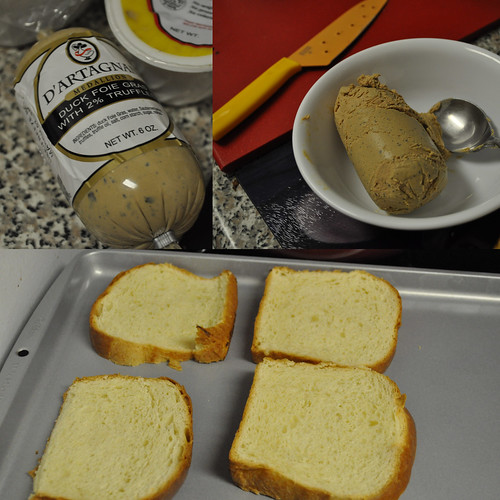
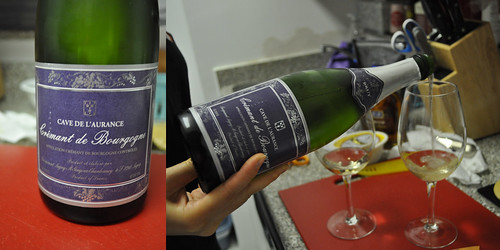
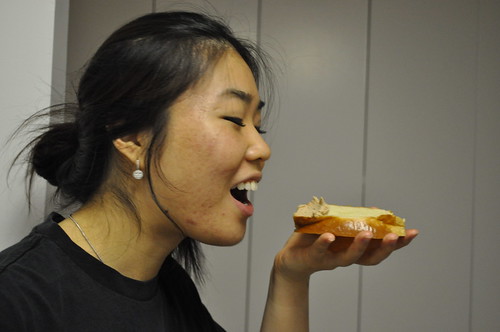
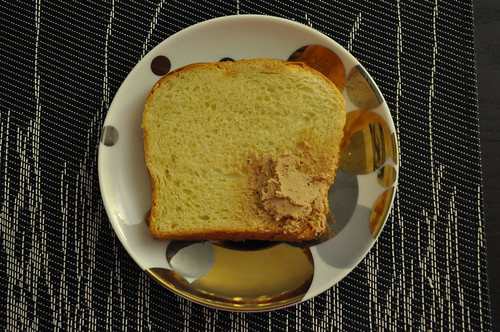
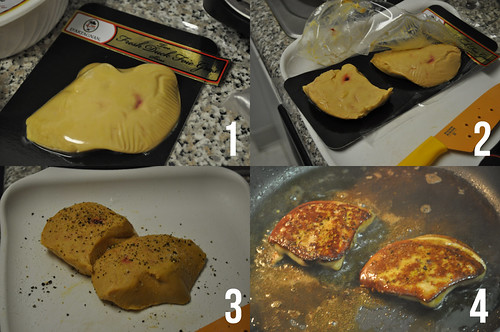

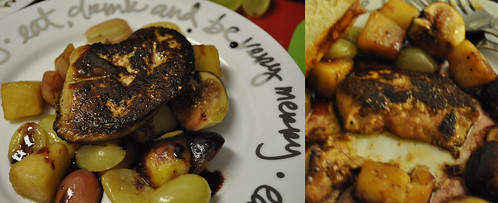


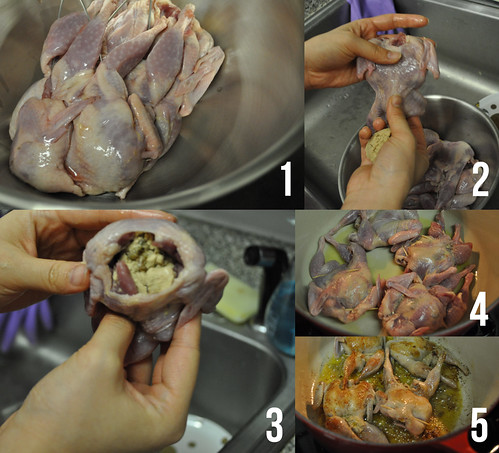

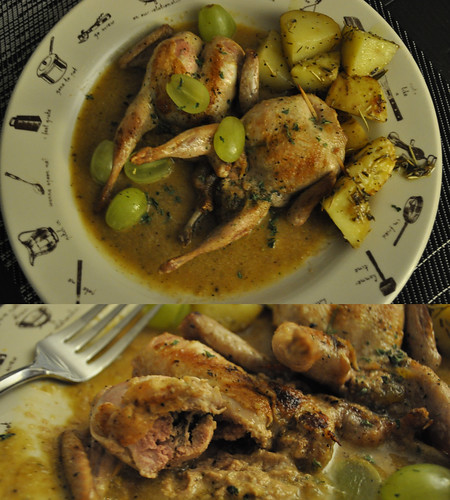
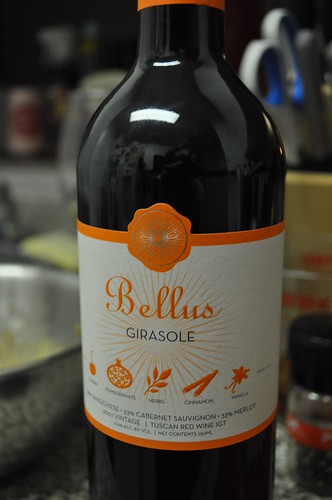
No comments:
Post a Comment